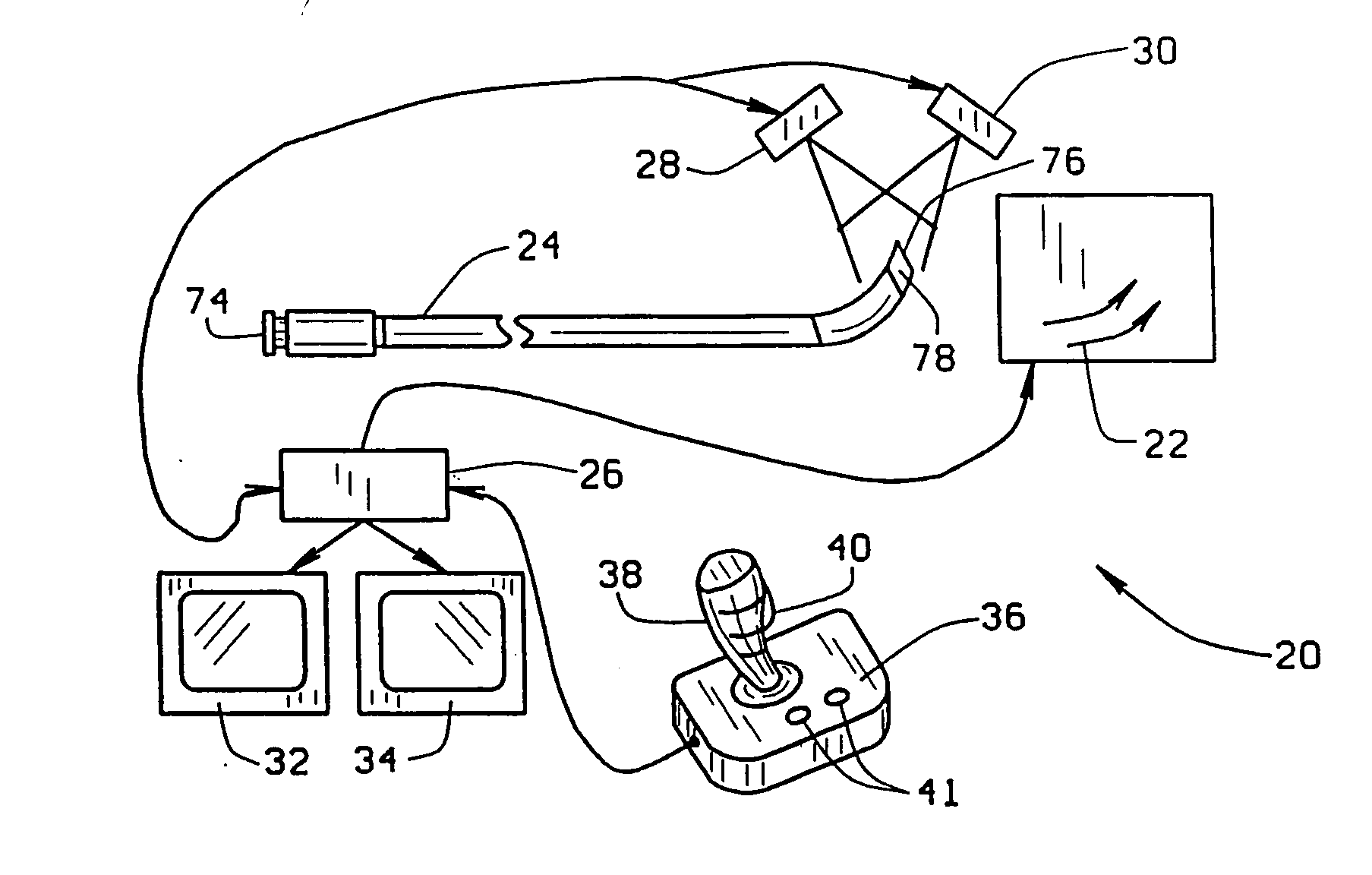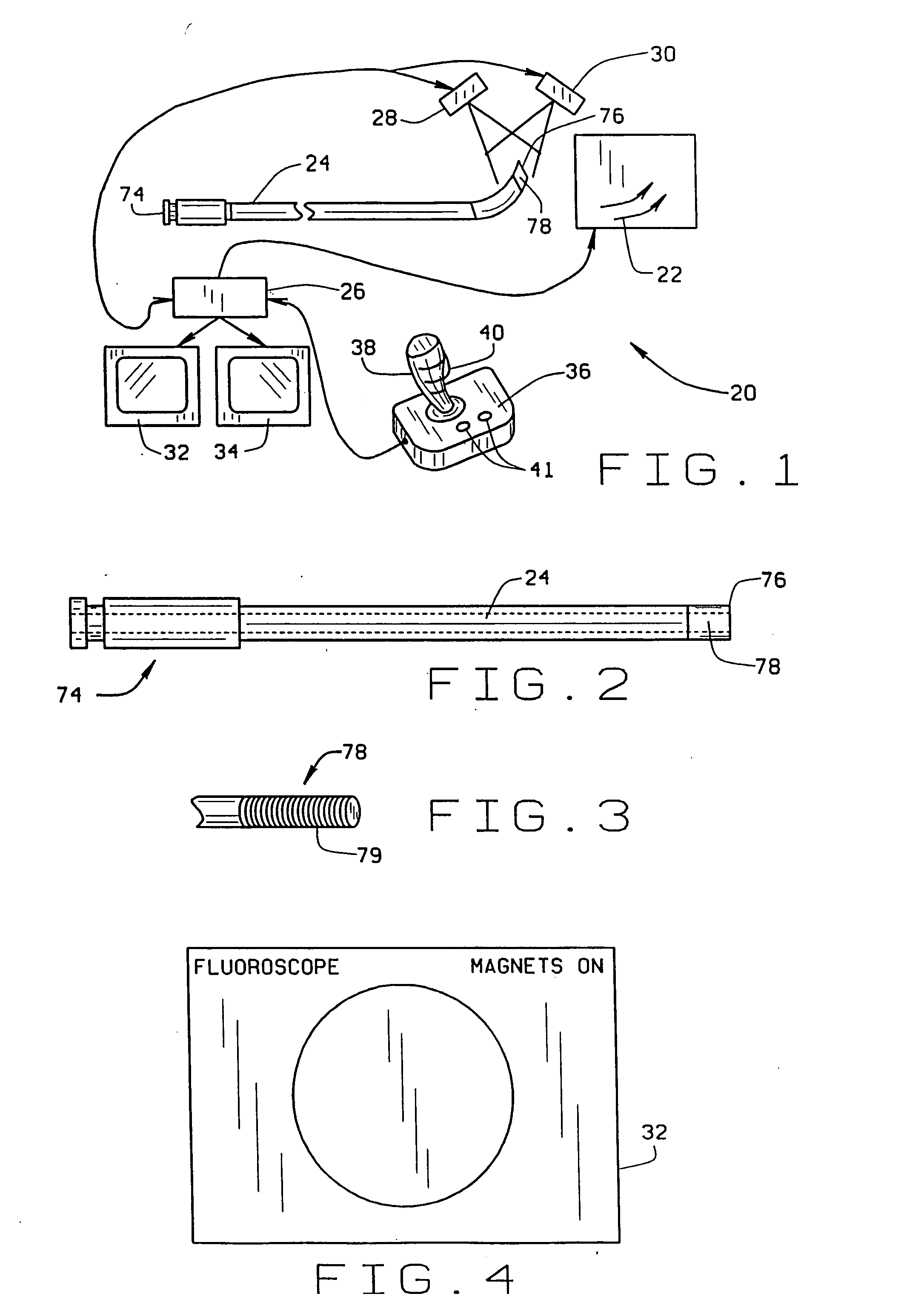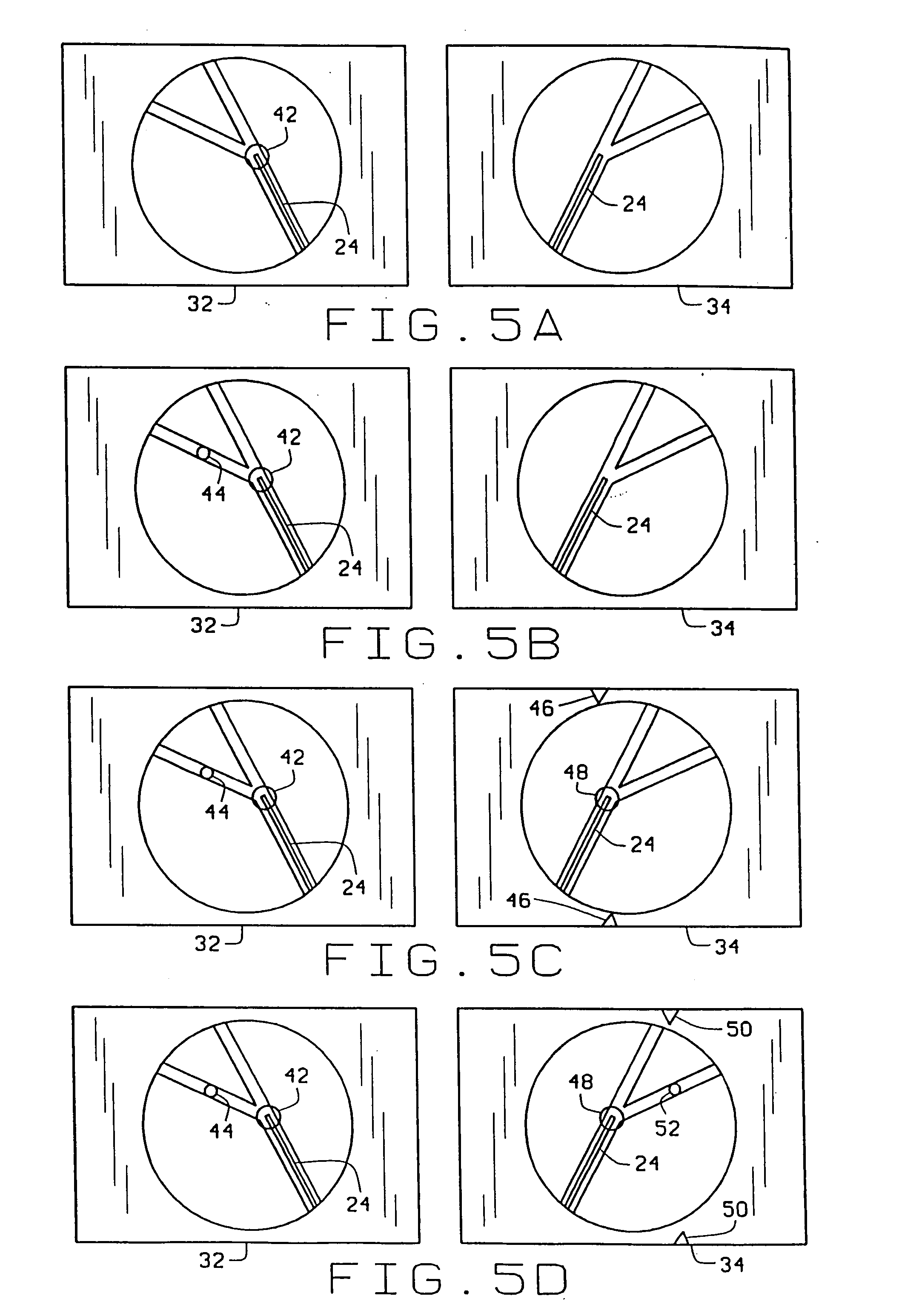Method and apparatus for magnetically controlling catheters in body lumens and cavities
- Summary
- Abstract
- Description
- Claims
- Application Information
AI Technical Summary
Benefits of technology
Problems solved by technology
Method used
Image
Examples
Embodiment Construction
[0019] An apparatus for navigating a medical device through body lumens and cavities constructed in accordance with the principles of this invention is indicated generally as 20 in FIG. 1. The apparatus 20 includes a magnet system 22 for applying a magnetic field to the magnet-tipped distal end of a medical device such as catheter 24, to navigate the distal end of the catheter through a portion of the body. While the description of the preferred embodiment references catheter 24, it is understood that method and apparatus apply to other medical devices having magnetically steerable distal ends, e.g., guidewires, endoscopes, etc. The apparatus 20 also includes a computer 26 for controlling the magnet system 22. First and second imaging devices 28 and 30, connected to the computer 26, provide bi-planar images of the body part through which the catheter 24 is being navigated. The computer 26 displays these images on displays 32 and 34. The computer 26 also displays interface informatio...
PUM
 Login to View More
Login to View More Abstract
Description
Claims
Application Information
 Login to View More
Login to View More - R&D
- Intellectual Property
- Life Sciences
- Materials
- Tech Scout
- Unparalleled Data Quality
- Higher Quality Content
- 60% Fewer Hallucinations
Browse by: Latest US Patents, China's latest patents, Technical Efficacy Thesaurus, Application Domain, Technology Topic, Popular Technical Reports.
© 2025 PatSnap. All rights reserved.Legal|Privacy policy|Modern Slavery Act Transparency Statement|Sitemap|About US| Contact US: help@patsnap.com



